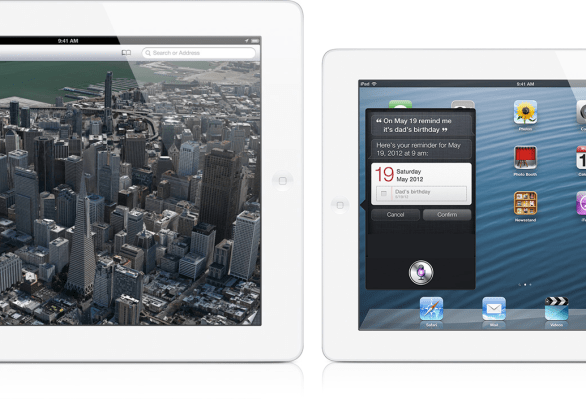Rumors around the iPad mini are understandably reaching a fever pitch now that an announcement seems very likely for October 23, and a new one over the weekend claims to have a full breakdown of iPad mini unit pricing. While it seems unlikely that Apple would release pricing info to retail partners ahead of a new product launch, it isn’t entirely unprecedented. But the real question is, how do the rumored prices stack up with Apple’s famed commitment to high profit margins on device sales?
According to German blog Schimanke, the iPad mini pricing will start at €249 (around $323 U.S.), and come in eight different configurations (16 if you count different colors) ranging in storage capacity from 8GB to 64GB, with both Wi-Fi-only and cellular wireless capabilities, running to €649 ($841 U.S.) at the top end. There’s some debate as to whether this would include VAT or not, the European value added tax on the purchase prices of some goods, is included in those figures. If it is, it would drop the entry-level price of the iPad mini to around $270 U.S.
Given that we’ve seen estimates and rumors putting prices starting between $199 and $349, this seems like a logical enough pricing breakdown for the iPad mini, whether or not we look at these prices as VAT inclusive or not. But looking at the latest iPad’s bill of materials cost, we get a better idea of what kind of margins Apple might enjoy on a smaller tablet, and how that figures with the above pricing details.
The iPad mini reportedly starts at $316.05 for BOM and manufacturing cost per unit, and is sold for $499, giving a rough margin of $182.95. At the top end, the margin jumps considerably, with the $829 64GB Wi-Fi+LTE iPad apparently carrying a manufacturing cost of $408.70, parts included, for a difference of $420.30. For another point of reference, consider that the latest iPod touch probably costs somewhere around $150 to make (an estimate based on the BOM of past iterations), and retails for $299, providing a margin of roughly $150.
Amazon and others may be fine with taking a bath on hardware in order to encourage media content sales, but that’s not how Apple has become the most profitable gadget maker in the world. For it to retail an iPad mini, the numbers would have to be in keeping with its commitment to high margins. So looking at an estimated entry price of around $270 U.S., is that possible?
Display and battery are going to be key factors affecting price, and so there does appear to be room to maneuver the price down relative to the larger newest iPad. Its display and touchscreen together cost an estimated $127; a smaller screen means lowering those costs, and if rumors proven true and we don’t see Retina resolution on this device, that could get costs down even lower. The iPhone 5 has a total display/touchscreen cost of $44 – a non-Retina 7.85-inch screen could then theoretically come in around the $50 mark. Likewise, the latest iPad’s battery is a $32 expenditure, while the iPhone 5’s is around $5, so that’s another place a smaller device with a smaller screen could save precious dollars. Also, the price of NAND flash has dropped significantly from latest iPad to iPhone 5, meaning an iPad mini could pack a 16GB module for around $10 instead of nearly $17.
Despite all those potential cost-cutting areas, pricing still seems much more likely to hit $300 or higher U.S., since anywhere under starts to approach some of the lowest margins Apple hardware would have seen in a while. Is that worth a foothold in the emerging small tablet market, one that arguably could halt the advance of the Kindle Fire, Google Nexus 7 and other Android tablets? Maybe so, but Apple isn’t one to limbo just for the sake of it, and at around $300, an iPad mini would still be very competitive with the rest of the field.
